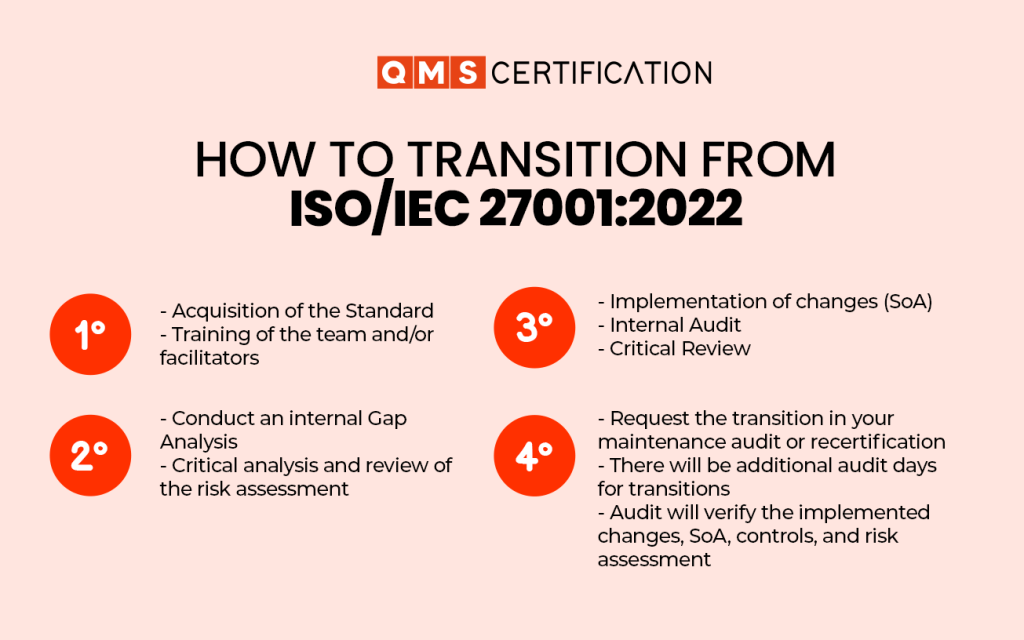If you’re feeling confused or lost with the impending transition to ISO 27001:2022, don’t worry! QMS CERTIFICATION has created this article to help you migrate and better understand the new standard, achieving more results in your company!
The 27001 is the ISO international standard for the implementation of information security management systems (ISMS). This standard has helped thousands of companies around the world take better care of their data, thereby providing more security to their customers and stakeholders.
However, especially since many companies operate in the digital environment (internet), the rate at which the ISMS context changes is very high, making the revisions of the standards not only welcome but also extremely necessary.
Therefore, in today’s article, we will discuss the main reasons that led to the revision of the standard.
Reasons for the Revision of ISO 27001
There are basically five factors that necessitated the revision of the standard. Let’s look at each of them:
Technological Evolution and Increased Digitalization
The technological leap we have experienced since 2013 (the last version of the standard) is enormous, leading to the emergence of various devices, practices, and even frameworks. Thus, the standards and information security devices also needed to be updated.
The Covid-19 pandemic significantly intensified the use of new technologies and the migration of hundreds of pieces of information that were managed physically to digital formats. For instance, cloud computing, which was extremely rare ten years ago, has now become standard. Consequently, new challenges have also arisen!
Learning Gained from the Application of the Standard
Over the past ten years, the application of the standard itself has provided learnings for organizations.
We have learned more about ISMSs, about which controls worked, which needed to be changed, etc. Also, the management requirements themselves have been refined, bringing new good management practices that go far beyond the controls suggested by the standard.
Emergence and Evolution of Data Protection Laws
Another crucial factor for the revision need was the emergence of new data protection laws, notably the GDPR (General Data Protection Regulation in Europe).
These laws have highlighted various new important issues for information security and data protection. So much so that the title of the standard now also includes the term “privacy” (“Information security, cybersecurity, and privacy protection”), which did not exist in the previous version.
Increase in Threats and Risks
With ten years of technological evolution and the creation of countless new devices and possibilities, it is easy to understand that risks have also increased. This is because new ways to circumvent security have been created and, of course, criminals have modernized and evolved, perfecting their innovation techniques and information theft.
This issue, along with the increase in digitalization caused by the pandemic, brought not only more companies to the digital environment but also more companies with little experience in protecting their information, thus presenting a ripe scenario for scams and problems arising from information security (IS).
ISO’s Natural Cycle of Continuous Improvement
All this information has fed into the natural cycle of improvement already existing in ISO (International Organization for Standardization), which has a policy of periodically reviewing its standards. All this in order to ensure adherence and updating of the standards to the market and its needs.
Just to exemplify this policy, at this exact moment, there are several other standards under review, such as the famous ISO 9001 and even ISO 45001. This ensures that the standards remain current, useful, and yield results for companies.
How to transition to ISO 27001:2022? (in 4 steps)
It’s clear that the transition is a process that needs to be very well thought out, ensuring that every part of the standard, each control, and every best practice are implemented consciously and yield results.
However, we have summarized the transition process into 4 basic steps. Let’s see how the transition to ISO 27001:2022 works in practice:

The steps are quite clear and educational, but below you will discover how to access a complete explanation of each of the topics.










